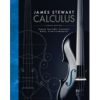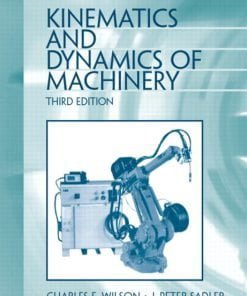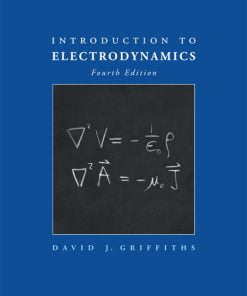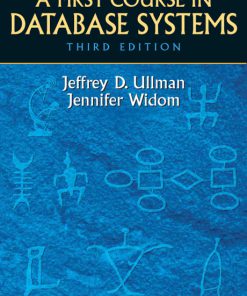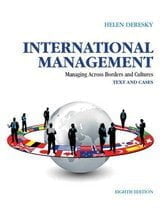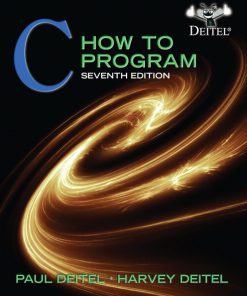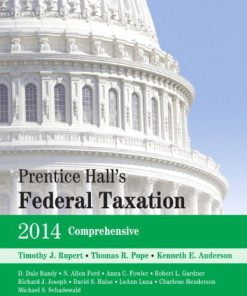Solution manual for Mechanics of Materials: An Integrated Learning System 4th Edition by Philpot
$35.00 Original price was: $35.00.$26.50Current price is: $26.50.
Solution manual for Mechanics of Materials: An Integrated Learning System 4th Edition by Philpot
Solution manual for Mechanics of Materials: An Integrated Learning System 4th Edition by Philpot
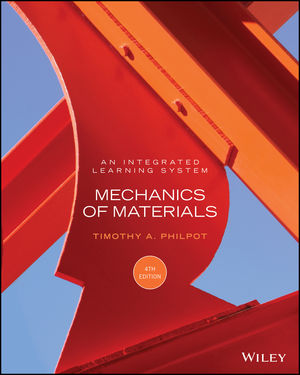
Protect details:
- ISBN-10 : 1119444330
- ISBN-13 : 978-1119444336
- Author: Timothy A. Philpot
Philpot’s Mechanics of Materials: An Integrated Learning System, 4th Edition, helps engineering students visualize key mechanics of materials concepts better than any text available, following a sound problem solving methodology while thoroughly covering all the basics.
Table contents:
Chapter 1 Stress
1.1 Introduction
1.2 Normal Stress Under Axial Loading
1.3 Direct Shear Stress
1.4 Bearing Stress
1.5 Stresses on Inclined Sections
1.6 Equality of Shear Stresses on Perpendicular Planes
Chapter 2 Strain
2.1 Displacement, Deformation, and the Concept of Strain
2.2 Normal Strain
2.3 Shear Strain
2.4 Thermal Strain
Chapter 3 Mechanical Properties of Materials
3.1 The Tension Test
3.2 The StressStrain Diagram
3.3 Hooke’s Law
3.4 Poisson’s Ratio
Chapter 4 Design Concepts
4.1 Introduction
4.2 Types of Loads
4.3 Safety
4.4 Allowable Stress Design
4.5 Load and Resistance Factor Design
Chapter 5 Axial Deformation
5.1 Introduction
5.2 Saint-Venant’s Principle
5.3 Deformations in Axially Loaded Bars
5.4 Deformations in a System of Axially Loaded Bars
5.5 Statically Indeterminate Axially Loaded Members
5.6 Thermal Effects on Axial Deformation
5.7 Stress Concentrations
Chapter 6 Torsion
6.1 Introduction
6.2 Torsional Shear Strain
6.3 Torsional Shear Stress
6.4 Stresses on Oblique Planes
6.5 Torsional Deformations
6.6 Torsion Sign Conventions
6.7 Gears in Torsion Assemblies
6.8 Power Transmission
6.9 Statically Indeterminate Torsion Members
6.10 Stress Concentrations in Circular Shafts Under Torsional Loadings
6.11 Torsion of Noncircular Sections
6.12 Torsion of Thin-Walled Tubes: Shear Flow
Chapter 7 Equilibrium of Beams
7.1 Introduction
7.2 Shear and Moment in Beams
7.3 Graphical Method for Constructing Shear and Moment Diagrams
7.4 Discontinuity Functions to Represent Load, Shear, and Moment
Chapter 8 Bending
8.1 Introduction
8.2 Flexural Strains
8.3 Normal Stresses in Beams
8.4 Analysis of Bending Stresses in Beams
8.5 Introductory Beam Design for Strength
8.6 Flexural Stresses in Beams of Two Materials
8.7 Bending Due to Eccentric Axial Load
8.8 Unsymmetric Bending
8.9 Stress Concentrations Under Flexural Loadings
8.10 Bending of Curved Bars
Chapter 9 Shear Stress in Beams
9.1 Introduction
9.2 Resultant Forces Produced by Bending Stresses
9.3 The Shear Stress Formula
9.4 The First Moment of Area Q
9.5 Shear Stresses in Beams of Rectangular Cross Section
9.6 Shear Stresses in Beams of Circular Cross Section
9.7 Shear Stresses in Webs of Flanged Beams
9.8 Shear Flow in Built-Up Members
9.9 Shear Stress and Shear Flow in Thin-Walled Members
9.10 Shear Centers of Thin-Walled Open Sections
Chapter 10 Beam Deflections
10.1 Introduction
10.2 Moment-Curvature Relationship
10.3 The Differential Equation of the Elastic Curve
10.4 Deflections by Integration of a Moment Equation
10.5 Deflections by Integration of Shear-Force or Load Equations
10.6 Deflections Using Discontinuity Functions
10.7 Method of Superposition
Chapter 11 Statically Indeterminate Beams
11.1 Introduction
11.2 Types of Statically Indeterminate Beams
11.3 The Integration Method
11.4 Use of Discontinuity Functions for Statically Indeterminate Beams
11.5 The Superposition Method
Chapter 12 Stress Transformations
12.1 Introduction
12.2 Stress at a General Point in an Arbitrarily Loaded Body
12.3 Equilibrium of the Stress Element
12.4 Plane Stress
12.5 Generating the Stress Element
12.6 Equilibrium Method for Plane Stress Transformations
12.7 General Equations of Plane Stress Transformation
12.8 Principal Stresses and Maximum Shear Stress
12.9 Presentation of Stress Transformation Results
12.10 Mohr’s Circle for Plane Stress
12.11 General State of Stress at a Point
Chapter 13 Strain Transformations
13.1 Introduction
13.2 Plane Strain
13.3 Transformation Equations for Plane Strain
13.4 Principal Strains and Maximum Shearing Strain
13.5 Presentation of Strain Transformation Results
13.6 Mohr’s Circle for Plane Strain
13.7 Strain Measurement and Strain Rosettes
13.8 Generalized Hooke’s Law for sotropic Materials
13.9 Generalized Hooke’s Law for Orthotropic Materials
Chapter 14 Pressure Vessels
14.1 Introduction
14.2 Thin-Walled Spherical Pressure Vessels
14.3 Thin-Walled Cylindrical Pressure Vessels
14.4 Strains in Thin-Walled Pressure Vessels
14.5 Stresses in Thick-Walled Cylinders
14.6 Deformation in Thick-Walled Cylinders
14.7 Interference Fits
Chapter 15 Combined Loads
15.1 Introduction
15.2 Combined Axial and Torsional Loads
15.3 Principal Stresses in a Flexural Member
15.4 General Combined Loadings
15.5 Theories of Failure
Chapter 16 Columns
16.1 Introduction
16.2 Buckling of Pin-Ended Columns
16.3 The Effect of End Conditions on Column Buckling
16.4 The Secant Formula
16.5 Empirical Column Formulas Centric Loading
16.6 Eccentrically Loaded Columns
Chapter 17 Energy Methods
17.1 Introduction
17.2 Work and Strain Energy
17.3 Elastic Strain Energy for Axial Deformation
17.4 Elastic Strain Energy for Torsional Deformation
17.5 Elastic Strain Energy for Flexural Deformation
17.6 Impact Loading
17.7 Work-Energy Method for Single Loads
17.8 Method of Virtual Work
17.9 Deflections of Trusses by the Virtual-Work Method
17.10 Deflections of Beams by the Virtual-Work Method
17.11 Castigliano’s Second Theorem
17.12 Calculating Deflections of Trusses by Castigliano’s Theorem
17.13 Calculating Deflections of Beams by Castigliano’s Theorem
Appendix A Geometric Properties of an Area
A.1 Centroid of an Area
A.2 Moment of Inertia for an Area
A.3 Product of Inertia for an Area
A.4 Principal Moments of Inertia
A.5 Mohr’s Circle for Principal Moments of Inertia
Appendix B Geometric Properties of Structural Steel Shapes
Appendix C Table of Beam Slopes and Deflections
Appendix D Average Properties of Selected Materials
People also search:
mechanics of materials an integrated learning system 4th edition pdf
mechanics of materials an integrated learning system
|
what is e in mechanics of materials
|
Related products
Solution Manual
Solution Manual for Absolute C++, 5/E 5th Edition Walter Savitch
Solution Manual
Solution Manual
Solution Manual
Solution Manual for Introduction to Electrodynamics, 4/E 4th
Solution Manual
Solution Manual
Solution Manual
Prentice Hall’s Federal Taxation 2014 Comprehensive Rupert 27th Edition Solutions Manual


